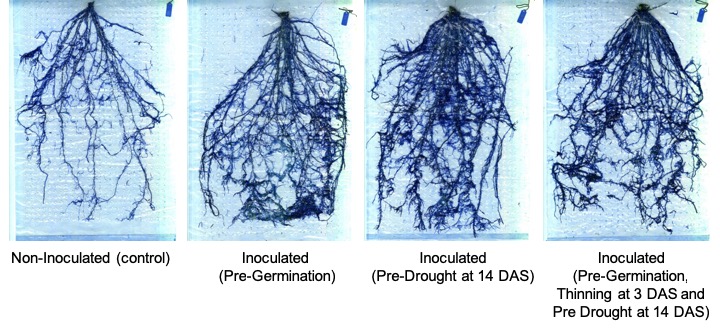
Certain species of rhizobacteria can modify the structure of rice roots, thereby increasing the plant’s ability to tolerate drought, a recent study showed.
Drought stress is a limiting factor in rice production, especially in upland where farmers are dependent to rainfall as irrigation source.
In their research, PhilRice scientists Roel Suralta, Jayvee Cruz, and their team, together with the students from Muñoz National High School, found that treating rice with Streptomyces mutabilis can enhance its root system development during dry spell.
Compared with untreated plants, one-time inoculation of the bacteria during pre-germination of seeds of NSIC Rc 192 in the laboratory significantly increased the plant’s shoot, root, and root hair lengths. The study also yielded similar result in the early vegetative stage.
“Improved root system development through increased root lengths allow the plants to absorb more nutrients and water from the soil. It enhanced the capacity of the root to avoid dehydration. This helps the rice plant maintain its above ground shoot development and yield under unfavorable conditions,” Suralta explained.
The study also showed that repeated treatment of the bacteria in the roots have lower efficiency than one-time inoculation.
“We assumed that repeated inoculation increased the population of bacteria, which may create an unhealthy competition between the roots and bacteria for soil resources such as nutrients. This assumption is subject for further validation,” Suralta said.
Meanwhile, the team recommended that trials must be conducted to validate the findings of the experiment under field conditions.
For more information about this research, read Roel R.Suralta’s article “Enhanced root system developmental responses to drought by inoculation of rhizobacteria (Syreptomyces mutabilis) contributed to the improvement of growth in rice” published in the Philippine Journal of Science through this link: http://philjournalsci.dost.gov.ph/images/pdf_upload/pjs2018/1stQtr/an_enhanced_root_system_developmental_response_to_drought.pdf.




